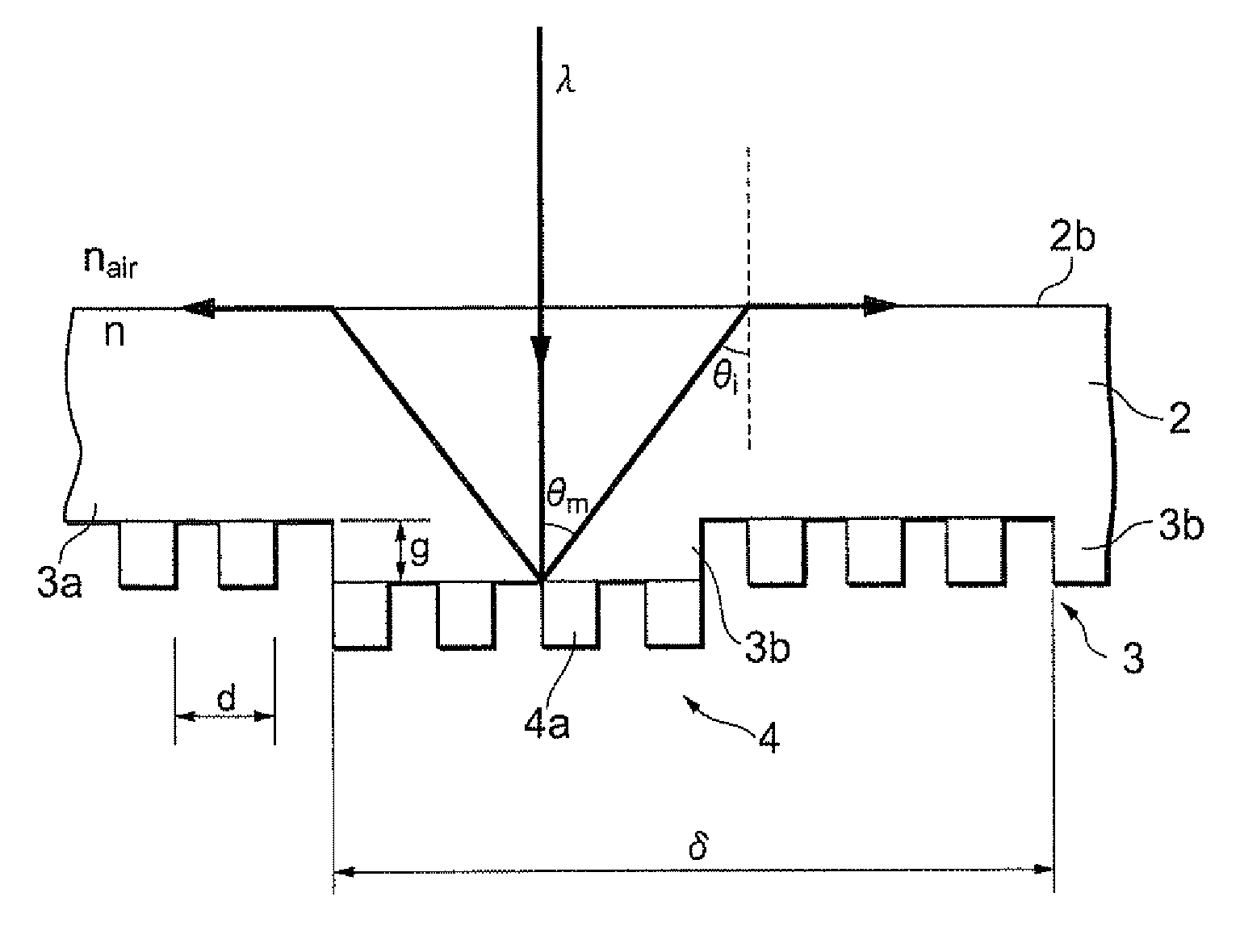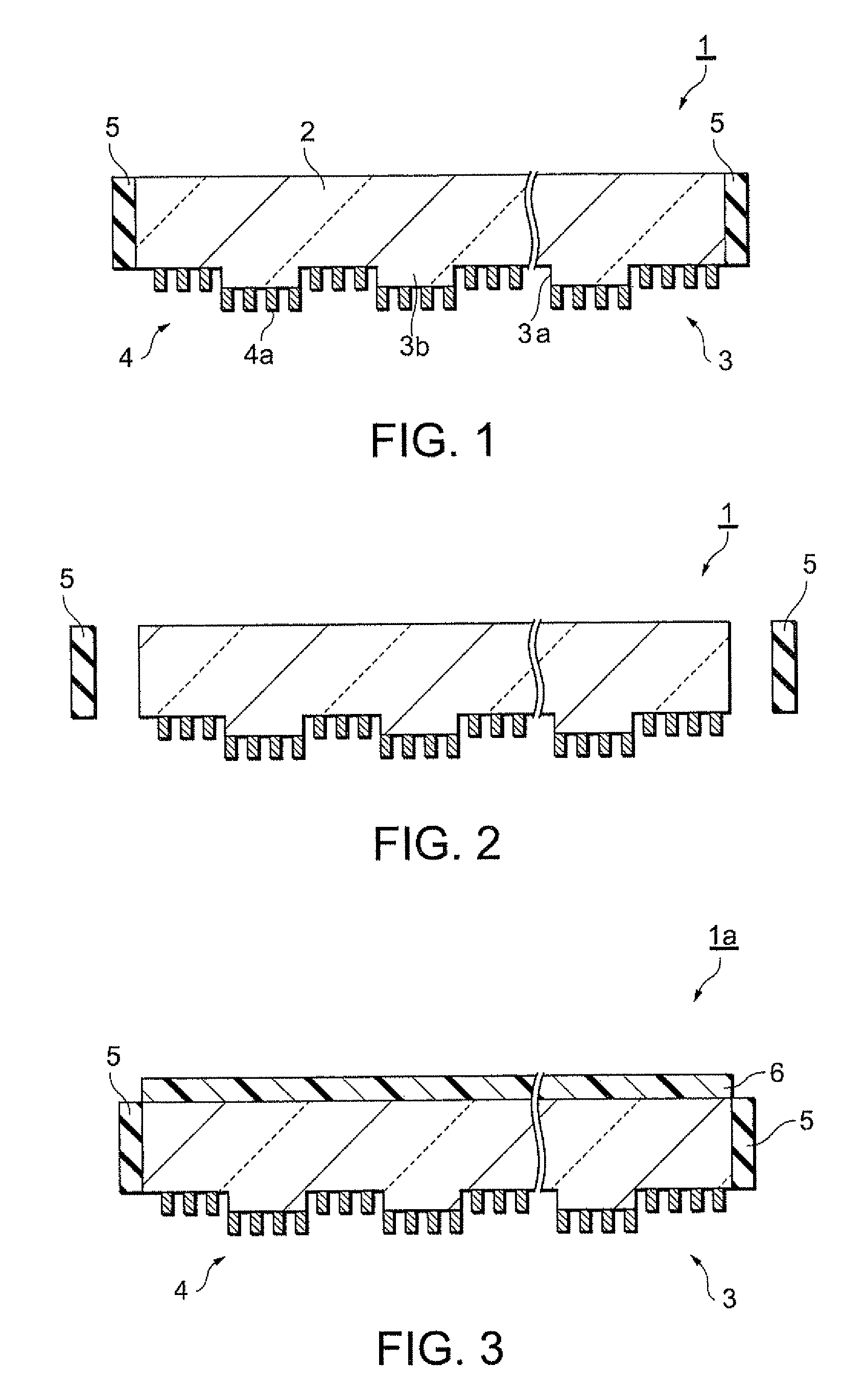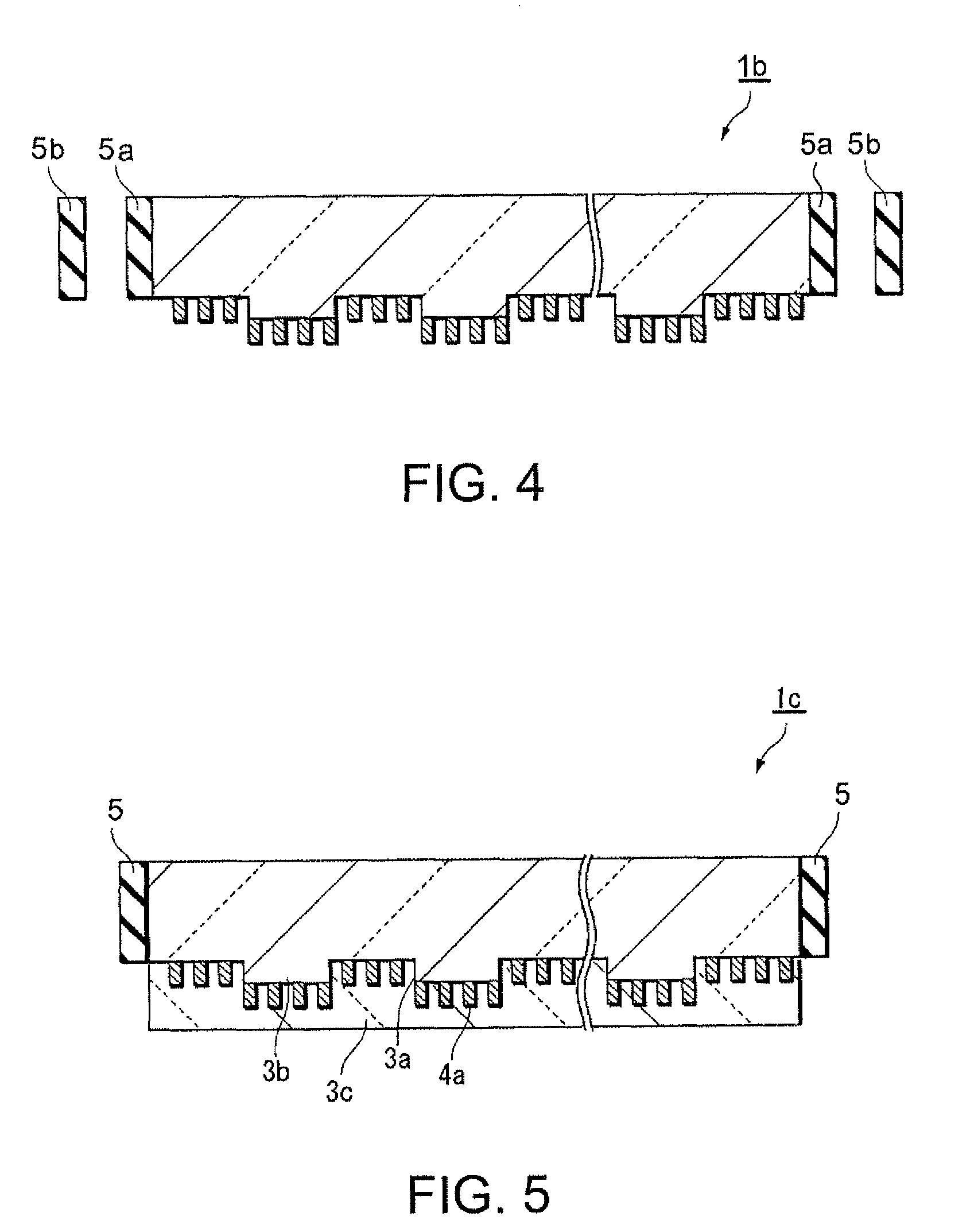Optical element, liquid crystal device, and display
a liquid crystal device and optical element technology, applied in the direction of instruments, polarizing elements, projectors, etc., can solve the problems of reducing display quality or the like, destabilizing the operation of the liquid crystal panel, and undesirable reflected light generated on the optical path, so as to inhibit suppress the negative influence of reflected light
- Summary
- Abstract
- Description
- Claims
- Application Information
AI Technical Summary
Benefits of technology
Problems solved by technology
Method used
Image
Examples
first embodiment
[0061]FIG. 3 is a schematic sectional view illustrating an optical element according to a modification of the An optical element 1a shown in FIG. 3 has the same structure as that of the optical element 1 in FIG. 1, and further includes an anti-reflective film 6. For example, the anti-reflective film 6 is a multilayered dielectric film. Constituent elements other than the anti-reflective film 6 are given the same reference numerals as those in the optical element 1 in FIG. 1 and descriptions thereof are omitted. Including the anti-reflective film 6 reduces light reflection at the second surface of the substrate 2.
third embodiment
[0062]FIG. 4 is a schematic sectional view illustrating an optical element according to the invention. An optical element 1b shown in FIG. 4 has the same structure as that of the optical element 1 in FIG. 1, and further includes an anti-reflective film such as an anti-reflective coating film (an AR film). The anti-reflective film is provided as a light-attenuating portion 5a at each end of the substrate 2. Additionally, the optical element 1 further includes a light absorbing member 5b that absorbs light passing through the light-attenuating portion 5a. Providing the above-said anti-reflective film allows light reflectance to be significantly reduced at the interface between the each end of the substrate 2 and air. Thereby, the intensity of light reflected at the interface therebetween is attenuated as compared with that before reflection. This significantly reduces re-incidence of the light reflected back at the interface of the each end to the grid 4. Additionally, the light passi...
fourth embodiment
[0063]FIG. 5 is a schematic sectional view of an optical element according to the invention. An optical element 1c shown in FIG. 5 has the same structure as that of the optical element 1 in FIG. 1, and further includes a coverage film 3c provided on a side of the substrate 2 having the diffractive structure 3 formed thereon. The coverage film 3c fills the height gap between the concave and the convex portions 3a and 3b and is arranged so as to cover the concave and the convex portions 3a, 3b and the fine lines 4a. The flattening film 3c is formed by depositing a film of spin-on-glass (SOG), polysilazane, or the like, by using a liquid phase process such as a coating process. The coverage film 3c has a refractive index approximately equal to that of the substrate 2, so that light transmitting through the optical element 1b is not influenced by the height gap between the concave and the convex portions 3a and 3b. Thereby, the light transmitting through the optical element 1b is hardly...
PUM
| Property | Measurement | Unit |
|---|---|---|
| height gap | aaaaa | aaaaa |
| intersection angle | aaaaa | aaaaa |
| intersection angle | aaaaa | aaaaa |
Abstract
Description
Claims
Application Information
 Login to View More
Login to View More - R&D
- Intellectual Property
- Life Sciences
- Materials
- Tech Scout
- Unparalleled Data Quality
- Higher Quality Content
- 60% Fewer Hallucinations
Browse by: Latest US Patents, China's latest patents, Technical Efficacy Thesaurus, Application Domain, Technology Topic, Popular Technical Reports.
© 2025 PatSnap. All rights reserved.Legal|Privacy policy|Modern Slavery Act Transparency Statement|Sitemap|About US| Contact US: help@patsnap.com



